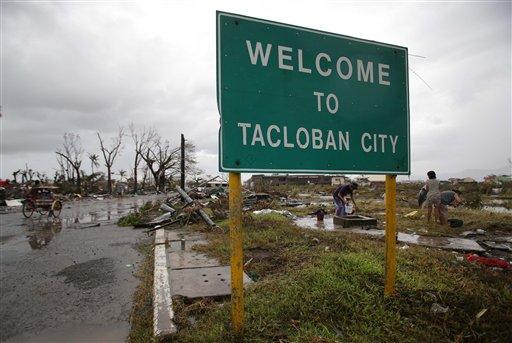A humanitarian crisis is unfolding in the Philippines in the wake of Typhoon Haiyan as authorities struggle to meet urgent demands for fresh drinking water, food, shelter and medical supplies for millions of people made homeless.
“The situation is catastrophic – it’s total chaos,” said Dr Natasha Reyes, Médecins Sans Frontières (MSF) emergency coordinator in the Philippines.
“Access is extremely difficult and is preventing people from receiving help. Our priority is to get to those people in more isolated areas; they are the hardest to reach and often the last to receive much-needed assistance,” she said in a statement.
A massive relief effort is under way after Typhoon Haiyan tore through parts of the central Philippines on Nov 8, ravaging coastal towns and inland communities and leaving thousands dead or injured.
Aid agencies and the military are desperate to deliver clean water, food and medical supplies to devastated areas, but they have been hampered by continuing bad weather and damaged infrastructure.
Dr Scott Cameron, a specialist in public health at the University of Adelaide, said conditions are ripe for disease, with reports surfacing of raw sewage, rotting corpses and material floating in water supplies.
“The water is filthy and you have corpses – humans and animals – so you really can’t rely on any of the surface water,” he told Epoch Times in a phone interview.
“That is why the aid agencies need to get fresh water in or get treatment plants in so that what is available can be cleaned up and made available to drink.”
Gut diseases like salmonella and cholera are the greatest concern, particularly for small children, while infections from injuries and skin abrasions will be hard to stop without clean water and medical supplies.
“You have problems related to the incident itself and then this long tail of illness, which then is a second phase of medical problem that could go on for weeks,” Dr Cameron said.
The official death toll from the typhoon reached 1774 on Nov 12, although the numbers are expected to be much higher as the damage is assessed across the region.
Aid officials and the United Nations initially estimated the number could reach 10,000 in Tacloban, one of the hardest hit areas, but President Benigno Aquino said Nov 12 he expects it will be much lower.
“Ten thousand, I think, is too much,” he said on CNN. “There was emotional trauma involved with that particular estimate, quoting both a police official and a local government official. They were too close to the incident, they didn’t have basis for it.”
The final death toll may take days to determine. Mr Aquino said his government had still been unable to make contact with 29 municipalities.
Aid has been flooding in from around the world as the extent of the damage surfaced.
The UN has made a $US25 million contribution from a central emergency fund and has launched an appeal to raise an additional $US300 million.
The United States pledged $US20 million in immediate aid for emergency shelters, food and supplies, and has sent a flotilla of navy vessels, including an aircraft carrier, four escort ships, two destroyers and two cruisers.
Two more US Navy ships, another destroyer and a supply ship are also on the way, Voice of America reported.
Australia has pledged $10 million in aid, and along with military and medical assistance is expected to give more.
According to Dr Cameron, the navy ships will have their own desalination facilities which will be critical in providing much needed fresh water.
Typhoon most intense
While typhoons (known as hurricanes in the US and as cyclones in Australia) are not infrequent in the Philipinnes, Typhoon Haiyan is considered to be among the most, if not the most, intense on record. The storm reached wind speeds of up to 378 km/hr (235 m/hr).
The damage worsened as the typhoon hit its peak over land, causing a massive storm surge to penetrate further inland – a 13 foot wave moving across the bay in Taclaban port.
Kerry Emanuel, a climate scientist at the Massachusetts Institute of Technology, said the Philippines has been known to get a large Category 5 typhoon once or twice a year but this was an exception.
“It’s a great rarity, fortunately, that a storm just happens to reach peak intensity when it’s making landfall. And that’s what happened in this case.”
At the start of a UN climate conference in Warsaw on Nov 11, Philippines climate change commissioner Naderev Saño broke down in tears. He blamed the typhoon on climate change.
“We can fix this. We can stop this madness,” he said. “Right here, right now. In the middle of this football field. And stop moving the goalposts.”



